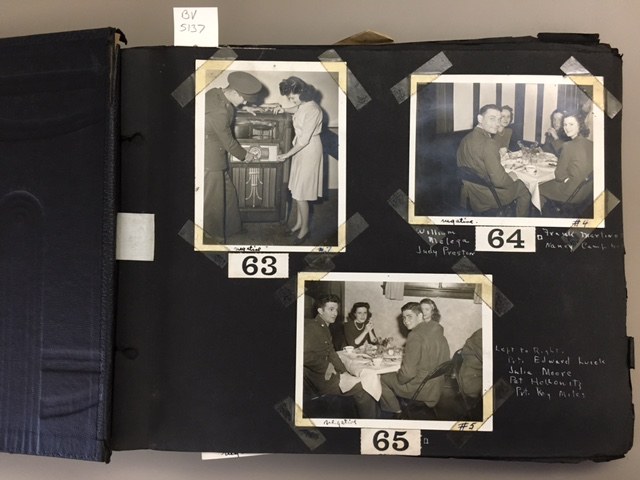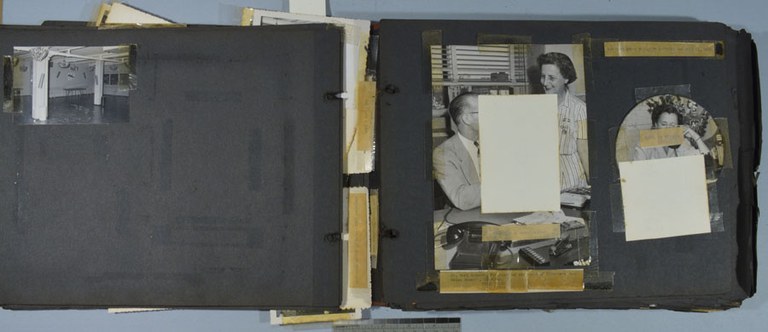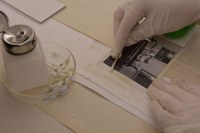
Plan your visit
Rescuing the Red Cross
October 7, 2016

When five photo albums documenting the activities of the Indianapolis Chapter of the American Red Cross arrived in the conservation lab looking a little worse for wear, conservation staff jumped into triage mode. The albums, with their brittle paper and failing adhesive tapes, were too unstable to be handled by library patrons or to be scanned safely, putting them at the top of the conservation priority list.Stabilizing all of the albums would have been a massive undertaking for just one conservator, so in order to make our way through the albums most efficiently, weworked as a team to develop a treatment protocol that could be divvied up intodiscrete steps and set up work stations around the lab, allowing multiple staffmembers to work on the project simultaneously.
The albums contain silver gelatin prints which have been attached to the album pages with adhesive tape. Over time, the tape has deteriorated the plastic carrier has yellowed and become brittle and the adhesive residue, in some instances, remains tacky and has begun oozing out onto the photos. In other cases, it is brittle and dry, causing the carrier to fall off and putting the photos at risk of being lost.
The first step was to disbind all of the albums; this makes both the tape removalprocess and the scanning process easier. However, we like to retain the originalformat of an object whenever possible; this is especially important when there arecaptions or other notes written directly on the album pages. For the three albumswith handwritten notations, we mended the pages and reattached the photos. After scanning, thesealbums will be re-bound. The other two albums did not have anythingwritten on the pages. Conveniently, these were also the two albums where the tapeshad failed completely. We decided to remove the adhesive residue from the photos and house them in polyethylene sleeves rather than retain the original albumstructure.

Once the albums were disbound, it was time to remove the old, yellow tape. The album pages were placed on top of a small heated mat for a few seconds to reactivate the adhesive; this allowed conservators to slide a microspatula under the carrier and pop it off after just a few seconds. The remaining adhesive residue was removed by applying organic solvents with cotton swabs.


After removing the adhesive, the photographs were reattached to the album pages with photo corners. The black album paper ubiquitous in commercial photo albums of the early and mid-20th century is very soft, with an almost fuzzy surface texture. This makes it difficult to stick the adhesive-backed photo corners to the pages. To overcome this, we stuck the corners onto sheets of thin, black-toned Japanese tissue paper, giving them a paper backing which could then be attached to the album pages with wheat starch paste. The torn edges of the pages were mended with the same tissue. The albums are now safe to handle and are on their way to be scanned.








